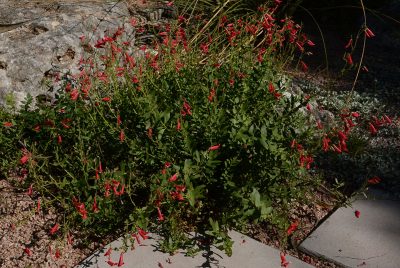Making Dreams Come True
encore date: August 25, 2018
original air date: June 23, 2018
Graphic designer James Barela grew his creative pursuits with plants. As a renter, he relies on containers, which led to designing his own and launching the beautiful Baetanical how-to blog and online shop. See what motivates his artistic union of plant and container. On tour, Ashley Romero and Juan De los Rios (@omgrowngarden) started growing a dream on a tiny apartment balcony. Discover the passion that led them to 6 acres of their own. Daphne features a viewer’s video to hand-pollinate squash and pumpkins. And find out how to grow hummingbird-fave native rock penstemon. Daniel Cunningham from Dallas Texas A&M AgriLife Research Water University paints and covers homemade rain barrels to style up saving water from a rainy day.

